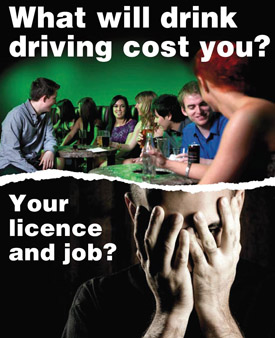Glasgow to host international drink-drive conference
Published: 18 February 2014
The University of Glasgow is to host a prestigious international course on the problem of alcohol and drug driving.
The University of Glasgow is to host an international course on the problem of alcohol and drug driving.
It will be the first time that the prestigious Robert F. Borkenstein Course, at the Center for Studies of Law in Action, Indiana University, has been held outwith the United States. In the 1950s, Professor Borkenstein invented the breathalyzer for motorists, building on work that was pioneered at Indiana before the Second World War.
The week-long course, April 7 - 11, will combine content from both the alcohol and drug courses traditionally held in the United States. The course will cover topics related to the pharmacology of drugs and alcohol and their effects on psychomotor performance and driving, as well as taking a look at testing and law enforcement concerns specific to the United Kingdom and Europe. The renowned faculty will consist of both long-standing Borkenstein Course faculty and first-time European lecturers.
 The University of Glasgow's Dr Gail Cooper, Forensic Medicine and Science in the School of Medicine, MVLS said: "We are honoured and very pleased to be the first University outside the United States to host this well known course. We would actively encourage participants from across the spectrum of specialities involved with investigating alcohol and drug driving."
The University of Glasgow's Dr Gail Cooper, Forensic Medicine and Science in the School of Medicine, MVLS said: "We are honoured and very pleased to be the first University outside the United States to host this well known course. We would actively encourage participants from across the spectrum of specialities involved with investigating alcohol and drug driving."
The early work in the USA on the effects of drink driving involved Indiana University’s Professor Rolla N. Harger: he conducted the first-ever “short course” on chemical tests for intoxication in 1937. Dr. Harger also introduced the Drunkometer, the first stable instrument for testing breath alcohol, in 1938. In 1954, Prof. Robert F. Borkenstein, invented the Breathalyzer, the first practical instrument for testing breath alcohol. Whereas the Drunkometer required re-calibration when it was moved from place to place, the Breathalyzer was highly portable.
In 1958, as a result of a symposium on alcohol and road traffic conducted at Indiana University, Harger, Herman Heise, T.A. Loomis, Leonard Goldberg, D.W. Penner and H.W. Smith offered an opinion that blood alcohol concentration of 0.05 percent will impair the driving ability of some individuals. Setting the standard for laws adopted by most of the United States, the researchers concluded that everyone is impaired in the driving function at a blood alcohol concentration of 0.10 percent. Indiana University's one and two-week courses on alcohol and highway safety began the same year. The courses continue today.
See also: www.borkensteincourse.org/robert-f-borkenstein-drug-alcohol-course/
First published: 18 February 2014
<< March
Borkenstein (pdf flyer)

